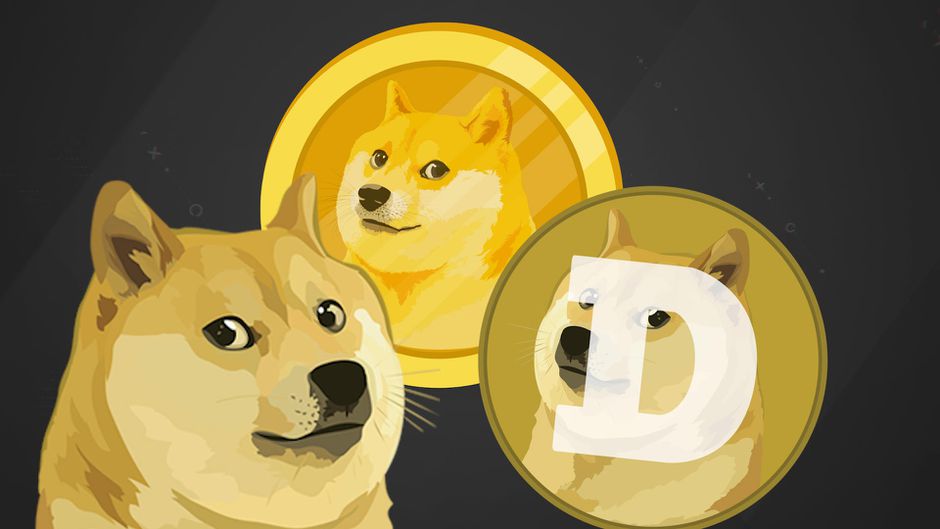Dogecoin is a cryptocurrency, similar to Bitcoin and Ethereum – albeit a very distinct creature than either of these well-known coins. The name “Dogecoin” was inspired by a once-famous meme and was created at least in part as a joke for bitcoin fans. Despite its unusual backstory, it has grown in popularity in 2021-as of this writing, Dogecoin is the fifth-largest cryptocurrency by market capitalization.
What is Dogecoin?
Dogecoin was launched in late 2013 by Billy Marcus and Jackson Palmer, who are software developers. To describe a Shiba Inu dog, Palmer picked the popular meme at the time that featured the misspelled term “doge” to characterize a Shiba Inu dog.
“Doge was really established to mock at Bitcoin,” Pat White, the CEO of Bitwave, remarked. In its early days, a community of fans staged publicity stunts to boost Dogecoin’s visibility, including funding for the Jamaican Bobsleigh team to attend the 2014 Olympics or sponsoring a NASCAR driver. Dogecoin reached cult status on Reddit’s Wall Street Bets message board in early 2021, the prime instigator behind the GameStop affair in January when fans pledged to send its value “to the moon.”
Dogecoin has appreciated by more than 5,000 per cent in two years, making it no longer a laughing matter. Tesla CEO Elon Musk is one of Dogecoin’s supporters, referring to it as his favourite cryptocurrency. Musk referred to Dogecoin as the “people’s currency,” comparing it to bitcoin.
@elonmusk You can’t decline! pic.twitter.com/5F0RAncfBo
— I am Hodler 🔑 (@iamhodler) April 2, 2019
How Does Dogecoin Work?
Dogecoin is a cryptocurrency that uses blockchain technology and is similar to Bitcoin and Ethereum. Blockchain is a distributed, secure digital ledger that records all transactions made using a decentralized virtual currency. All Dogecoin holders have access to the same copy of the blockchain ledger, which is frequently updated with all new transactions in the currency. The blockchain network of Dogecoin, like other cryptocurrencies, employs cryptography to secure all exchanges.
Miners use computers to solve complex mathematical problems in order to record transactions and process them on the Dogecoin blockchain, a so-called “proof of work” system. Miners are rewarded with extra Dogecoin for processing transactions and maintaining the blockchain ledger, which they may then hold or sell on the open market.
Dogecoin may be used for purchases and payments, but it isn’t a good store of value. This is due in part to the fact that Dogecoin has no limit on the number of coins that may be created through mining-as a result, the cryptocurrency is highly inflationary by design. The blockchain rewards miners for contributing computational power by generating hundreds of thousands of new DoGES every day, making it tough for speculative price increases in Dogecoin to last over time.
Dogecoin vs. Bitcoin
Dogecoin is quite different from Bitcoin in several ways. For starters, it’s faster and easier for miners to finish the mathematical equations that complete and record transactions on the transactions, making Dogecoin more efficient in processing payments.
The number of Dogecoins that can be mined is also different, with no lifetime cap on the number of coins produced as we previously observed. There is a 21 million Bitcoin limit on the maximum number of coins that may ever be created. This implies miners must work harder and longer over time to generate new Bitcoin, and it helps keep Bitcoin’s value from fluctuating too much over time.
How to Buy Dogecoin
Dogecoin may be purchased on cryptocurrency exchanges like Binance and Kraken. The exchanges need you to create an account and deposit U.S. dollars or cryptocurrency into it. You can then purchase and exchange cryptocurrencies, including Dogecoin, using this method. Notably, Coinbase, one of the most popular crypto exchanges, does not accept Dogecoin purchases.
Robinhood and TradeStation, for example, allow you to purchase Dogecoin as well as traditional assets such as stocks, mutual funds, and bonds. They don’t have as many of the cryptocurrencies as exchanges do, but Dogecoin is typically accessible.
As with other cryptocurrencies, it’s a good idea to move Dogecoin from its wallet to a crypto wallet as soon as possible. Wallets come in a variety of shapes and sizes, including those provided by exchanges like Coinbase (you can’t buy Dogecoin on Coinbase, but you may keep it there). A secure private password is required to safeguard the wallet. Because your funds are kept outside of an exchange, there’s an extra layer of defence against cyber attacks. You could get free Dogecoins for completing basic activities online before Dogecoin exploded onto the scene and skyrocketed in value.
Is Dogecoin a Good Investment?
Because there is no maximum number of Dogecoins that can be produced, and millions of new Dogecoins are released to the market every day, there is little incentive to keep the currency for a long period. Because of the system’s limit on the number of coins that may be generated, Bitcoin continues to climb in value.
Because of its low per-coin value, Dogecoin was more frequently given away in the past. “People were more inclined to give them out as a result of their low per-coin value throughout most of 2020, which is why they were more likely to do that,” Gray explained. Users on social networks such as Reddit, Twitter, Facebook, and others may use Dogecoin to thank or “tip” one another for creating content.” Dogecoin’s price increase in 2021 might not be sustainable over the long run. The dogecoin community’s propensity to tip and give away money remains to be seen.
Should You Buy Dogecoin?
Those who bought Dogecoin in January 2021 have been very well rewarded. Still, White is cautious about purchasing Dogecoin as an investment, particularly since it continues to add new coins to the market. The continuous addition of new coins on the market has put unsustainable downward pressure on the coin’s value. Buying Dogecoin, as with any cryptocurrency, involves risk. It’s usually a good idea to purchase a few coins and learn the ropes but it’s probably best to avoid putting more than a token amount of your hard-earned money into something that began life as a joke.
In the Beginning
Dogecoin is a cryptocurrency that was created in 2013 by Sydney, Australia, product manager Austin Clark as a means to satirize the cryptocurrency phenomenon. Palmer has been characterized as a “sceptic-analytic” observer of the new technology, and his early tweets about his new cryptocurrency project were intended humorously. However, after receiving positive responses on social media, he subsequently acquired dogecoin.com.
Billy Markus, a software developer at IBM who wanted to launch a digital currency but couldn’t get people interested in it, found the Dogecoin buzz in Portland, Oregon. To gain permission to develop the software behind an actual Dogecoin, Markus contacted Palmer. Dogecoin was created by Doge and Markus on Dec. 6, 2013. The value of Dogecoin rose 300 per cent two weeks later, on Dec. 19, perhaps due to China’s prohibition of its banks from buying cryptocurrency.
Dogecoin is an “inflationary currency,” while deflationary cryptocurrencies like Bitcoin have a cap on the number of coins that will be generated. Every four years, the amount of Bitcoin created via mining awards is halved, and its inflation rate is likewise reduced until all Bitcoins are in circulation.
In January 2014, the Dogecoin community donated $30,000 worth of Dogecoins to sponsor the Jamaican bobsled team’s trip to the Sochi Winter Olympic games.6 In March of that year, the Dogecoin community gave $11,000 in Dogecoin to fund a well in Kenya and $55,000 to sponsor NASCAR driver Josh Wise.
The doge meme-based digital currency, Dogecoin, has continued to grab people’s attention as Tesla CEO Elon Musk and rapper Snoop Dogg sent out a slew of tweets over the weekend, pushing up the price of the meme-currency. Since its copycat rally at GameStop, Tesla CEO Elon Musk has been outspoken about the cryptocurrency on Twitter. Dogecoin rose by more than 600 per cent in January as a result of the Reddit mania surrounding GameStop.
The sudden rise of Dogecoin is not the first time that an unusual digital currency has captured attention. Dogecoin began as a joke between two engineers in 2013. When Billy Markus, an IBM software engineer, and Jackson Palmer, an Adobe software developer, successfully melded two of 2013’s most talked-about phenomena into one creation called “doge,” they had never even met before. The end result was Dogecoin.
Dogecoin was a cryptocurrency that quickly gained popularity, much to the dismay of its creators. The very first month of dogecoin.com saw over a million unique visitors. The Shiba Inu dog with Comic Sans thought bubbles spewing from it with near monosyllabic ideas was the doge meme that became popular in 2013. The meme might be employed to convey a wide range of subjects, including jokes about naps, early mornings, diets – and even space travel.
KEY TAKEAWAYS
- The Dogecoin cryptocurrency was created in 2013 by Jackson Palmer and Billy Markus.
- Dogecoin grew out of a popular internet meme that featured a Shiba Inu, which was initially designed as a joke.
- It was initially created on the Litecoin blockchain, with the same security technology.
- Dogecoin has a dedicated following of fans who use it as a means to reward online content with donations.
Click here for more Crypto news
***


